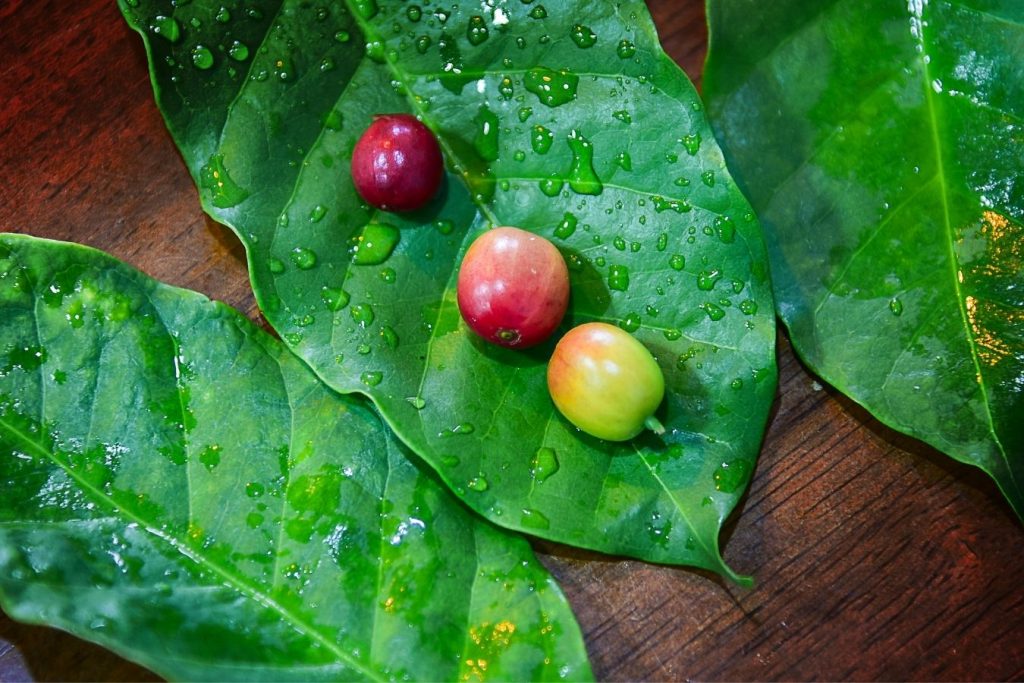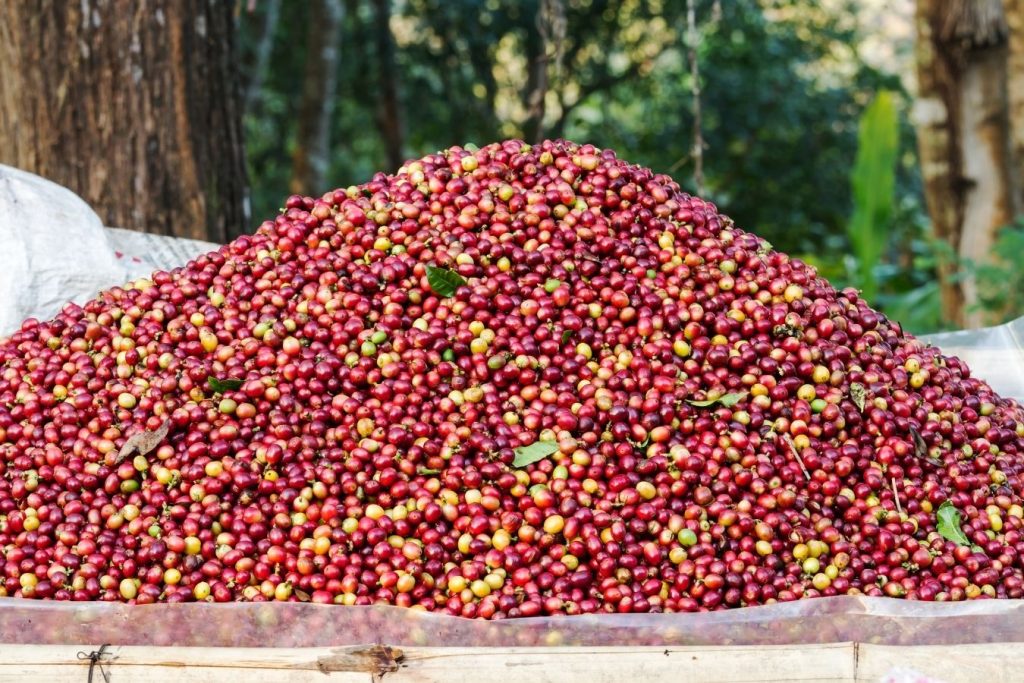
Exploring Robusta Coffee: A Closer Look at Robusta Coffee Beans
What is Robusta Coffee?
Robusta coffee, derived from the beans of the Coffea canephora plant, is one of the two primary types of coffee cultivated and consumed worldwide, with Arabica being the other. Robusta coffee accounts for about 30% to 40% of global coffee production.
The name “Robusta” reflects the hardy nature of the coffee plant. It can grow at lower altitudes and in various climates worldwide, making it a more resilient and ‘robust’ coffee species than Arabica. Robusta coffee plants are also more resistant to pests, insects, and extreme weather conditions.
Robusta coffee typically tastes stronger, more bitter, and less acidic than Arabica coffee. It also has a higher caffeine content, contributing to its distinct flavor profile. Robusta coffee is often used in blends and espresso to add a bold, robust taste and create a thicker crema.
The primary growing regions for Robusta coffee include Africa, Indonesia, and India. Due to its distinctive flavor and versatility, Robusta coffee remains a popular choice for many coffee enthusiasts and is an essential component of the global coffee industry.
The Robusta coffee plant thrives in lower altitudes and various climates worldwide, making it a resilient and ‘robust’ coffee species. Furthermore, Robusta coffee plants resist pests, insects, and extreme weather conditions.
The primary regions for growing Robusta coffee include Africa, Indonesia, and India.

Origin of Robusta Coffee
Coffea Canephora – Robusta coffee was first discovered in Congo – Belgium (Africa) in the 1800s. Coffea canephora is also a native tree of the tropical forests around Lake Victoria in Uganda. Robusta coffee was put into Southeast Asia in the 1900s after the rust (Coffee Leaf Rust) has wiped out entire varieties of Arabica in Sri Lanka in 1869 (or 1867, according to Wiki), simultaneously attacking most plantations in Java – Indonesia in 1876. Currently, Robusta accounts for between 30% and 40% of the total world coffee production, popular in West and Central Africa, Southeast Asia, Central – South America, and mainly Brazil (where it is called Conillon).
“The popularization of Robusta coffee trees began near the Lomani River, a tributary of the Congo River in Central Africa. Robusta coffee from the Congo (the Democratic Republic of the Congo) has been shipped to Java through a nursery in Brussels. From here, it has been successfully bred to establish plantations in other countries such as India, Uganda, and the Ivory Coast – The Craft and Science of Coffee.”
Central Africa is believed to be the source of two major commercial coffee species, Coffea Arabica (i.e., Arabica) and Coffea canephora (i.e., Robusta). Although Robusta has long been regarded as Arabica’s ugly cousin, recent studies show that is not true. It turns out that Robusta is the parent of the Arabica breed. By analyzing the genetic sequences of the coffee genus species, scientists have discovered that, in southern Sudan, Coffea canephora crossed with another species called Coffea euginoides that gave birth to the genus Coffea arabica – that is, Arabica coffee.
Distribution and botanical characteristics of robusta coffee
Robusta farming was started in the early 19th century – as noted above – because of the considerable damage caused by CLR to C. arabica plantations in Asia. According to credible documents (Charrier and Eskes, 1997), It was brought to Java, Indonesia, in 1901, the Democratic Republic of the Congo (Republic of the Congo). These Robusta trees quickly became available in Africa and were adopted by early African farmers for their vitality, yield, and resistance to CLR. At the same time, several other Robusta wild species such as Kouillou, Maclaudi & Game, Niaouli, or Coffea Uganda are also deployed in different countries such as Ivory Coast, Guinea, Togo, or Uganda, respectively.

Since the 1960s, new cloned Robusta strains have been developed in Uganda, Congo, and later in Ivory Coast. However, there is not much change in properties compared to the original tree. Today, only a few countries continue the program of commercial selection, with some improvements. This is typical in Cote d’Ivoire, where production increases from 30% to 110%, and grain size increases by 50%. Several new varieties were also developed in Brazil, called Conlon.
Botanical characteristics of robusta
Even if some coffee trees are found up to 2300m above sea level, most species (67%) are adapted to the lower 1000m altitude limit. And Robusta is typical of that “adaptable” group, so they are grown in lower lands than Arabica (only in the range of 0 – 800m). In return, it requires quite a lot of rainfall (from 1200 – 2500mm), so most species widely distributed in the African continent (such as C. canephora C. eugenioides) are usually found in the environment.
Characteristics of Robusta coffee flavor
Distinctive Flavors of Robusta Coffee
Robusta coffee is known for its unique flavor profile, which sets it apart from other coffee varieties. Some key characteristics of Robusta coffee flavor include:
- Strong and Bold Taste: Robusta coffee beans typically produce a stronger, bolder, and more robust flavor compared to Arabica beans. This intensity is often appreciated by those who prefer a more assertive coffee taste.
- Earthy and Woody Notes: Robusta beans tend to exhibit earthy and woody flavors. These taste notes can be quite prominent and contribute to the overall depth and richness of the coffee.
- Higher Bitterness: Robusta coffee has a higher caffeine content than Arabica, which leads to increased bitterness in the flavor profile. This characteristic can be appealing to those who enjoy a more bitter taste in their coffee.
- Lower Acidity: Compared to Arabica beans, Robusta coffee has a lower acidity, resulting in a smoother, less acidic taste. This can be appealing to those who are sensitive to acidic flavors in coffee.
- Thick and Creamy Crema: When used in espresso, Robusta beans produce a thick and creamy crema, which is the layer of foam on top of the espresso shot. This rich crema is highly prized by coffee aficionados and contributes to a velvety mouthfeel.
In summary, Robusta coffee offers a unique flavor profile with strong, bold taste, earthy and woody notes, higher bitterness, lower acidity, and a thick, creamy crema in espresso. This distinctiveness makes it an appealing choice for coffee lovers who appreciate these specific characteristics.
Their taste has always been evaluated as inferior to Arabica. The flavor is darker, more acrid, more bitter, especially the acidity – The acidity is higher than Arabica. Since Arabica coffees have a smoother taste, higher acidity, and more decadent flavors, they are generally considered premium. In addition, most Robusta coffee growing and processing areas focus on dry processing (instead of wet processing like Arabica coffees), resulting in a more bitter, earthy, burnt taste when roasted.
In nature, Chlorogenic Acid (CGA) and Caffeine play a role in helping coffee plants resist insects, because Robusta is more immune to pests than Arabica.
However, compensating for the loss of flavor, Robusta coffee has on average twice the caffeine content of Arabica coffee (2%-2.5% vs. 1.1%-1.5%). So the combination of Arabica coffee with Robusta gives a relatively higher total blend quality than Arabica coffee. That’s why Italian coffee (Espresso) always has 10-15% Robusta coffee to increase flavor and create the crema layer more attractive.
And from production practice, it is shown that when wet-processed, coffee with wet processing can give higher quality than regular coffee (because Arabica has many types and not all classes are delicious). Therefore, the comparison of Arabica and Robusta is sometimes not entirely accurate.
BLENDS OF ROBUSTA
Robusta Blend Varieties
- Traditional Robusta-Arabica Blend: This classic blend combines the bold flavor and higher caffeine content of Robusta beans with Arabica beans’ smoother and more aromatic taste. This combination creates a balanced and full-bodied coffee with a pleasant aroma.
- Espresso Blend: Many espresso blends incorporate Robusta beans to add a strong, robust flavor and a thicker crema to the espresso shot. The mix of Arabica and Robusta beans provides a rich taste, perfect for an intense and invigorating espresso experience.
- Italian Roast Blend: Inspired by traditional Italian coffee culture, this blend features a combination of Robusta and Arabica beans that have been dark roasted. The result is a bold and smoky flavor with a hint of bitterness, perfect for those who enjoy a strong cup of coffee.
- French Roast Blend: Similar to the Italian roast, the French roast blend combines Robusta and Arabica beans that have been dark roasted to bring out the beans’ natural oils. This blend offers a rich, bold flavor with a slightly smoky aftertaste, perfect for those who appreciate a more intense coffee experience.
- Mocha Java Blend: This blend combines Robusta beans with Arabica beans sourced from Ethiopia and Java, creating a unique flavor profile. The mix of beans results in a coffee with a smooth, wine-like acidity, earthy tones, and a hint of chocolate or mocha notes.
By experimenting with various combinations of Robusta and Arabica beans, roasters can create diverse blends that cater to different taste preferences and offer unique flavor profiles.
